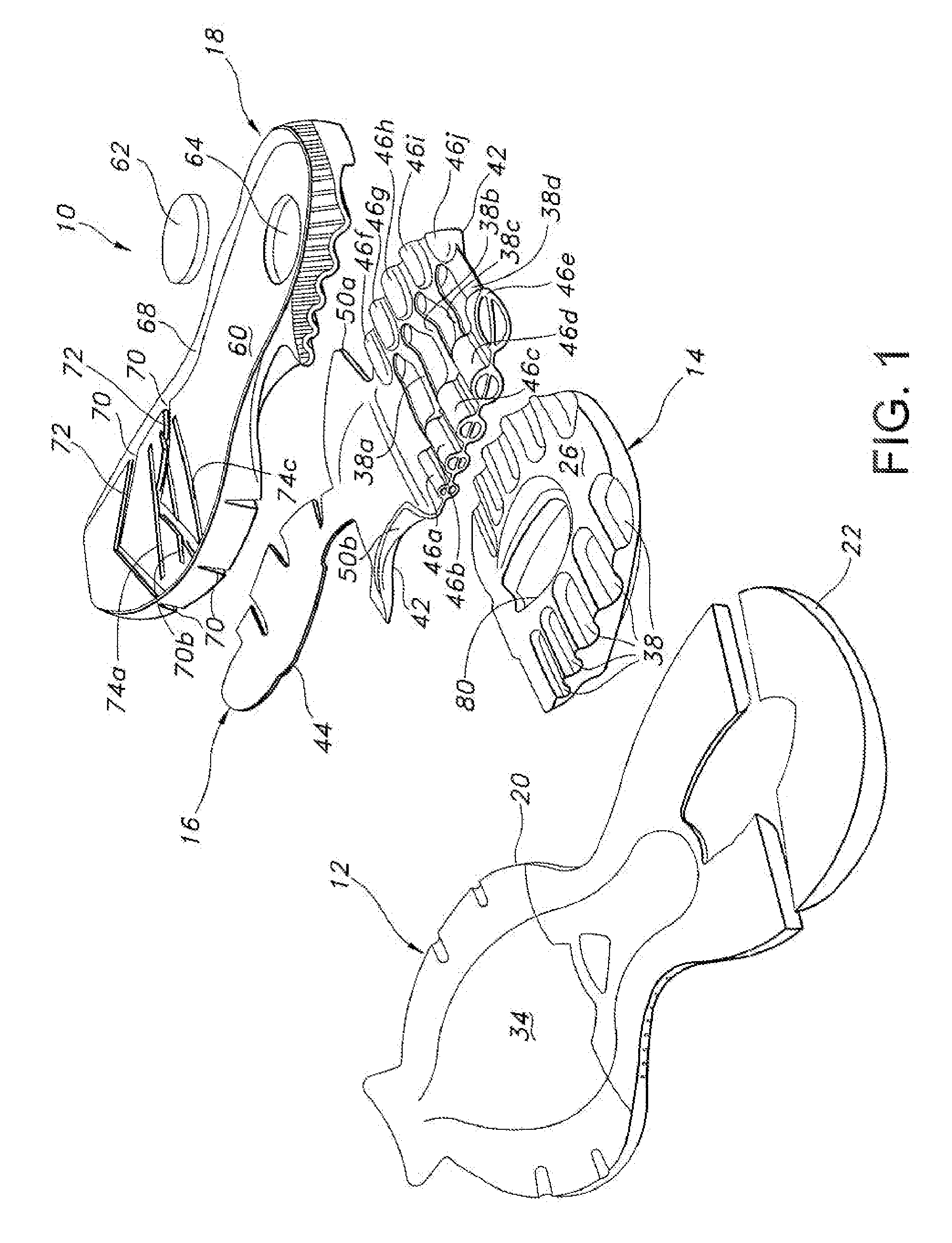Footwear sole
a technology for soles and shoes, applied in the field of shoes, can solve the problems of eva, conventional closed and open cell foams, and the sole may lose its resiliency over time, and achieve the effects of extending the cushioning life of the midsole, increasing vertical stiffness, and convenient tuning
- Summary
- Abstract
- Description
- Claims
- Application Information
AI Technical Summary
Benefits of technology
Problems solved by technology
Method used
Image
Examples
Embodiment Construction
[0031] A footwear sole manufactured in accordance with an embodiment of the present invention is shown in FIG. 1, and generally designated 10. The footwear sole 10 generally includes an outsole 12, a heel wedge, 14 an insert 16 and a midsole 18. The sole 10 may be incorporated into an article of footwear, such as shoe 200 shown in FIG. 2. The shoe 200 may include an upper 202 that is affixed to the sole 10. The shoe 200 may also include a footbed (not shown) that is removably fitted into the upper 202 atop of the sole 10. The insert 16 may include support tubes 46a-j with internal webs 48a-j that are configured to control the support profile of the sole 10. Although the present invention is described in connection with a conventional standard height running or trail running shoe 200, the present invention is not limited to use in shoes of that type. The present invention is well-suited for use in essentially any type of sole and can be incorporated into essentially any type of footw...
PUM
 Login to View More
Login to View More Abstract
Description
Claims
Application Information
 Login to View More
Login to View More - R&D
- Intellectual Property
- Life Sciences
- Materials
- Tech Scout
- Unparalleled Data Quality
- Higher Quality Content
- 60% Fewer Hallucinations
Browse by: Latest US Patents, China's latest patents, Technical Efficacy Thesaurus, Application Domain, Technology Topic, Popular Technical Reports.
© 2025 PatSnap. All rights reserved.Legal|Privacy policy|Modern Slavery Act Transparency Statement|Sitemap|About US| Contact US: help@patsnap.com



